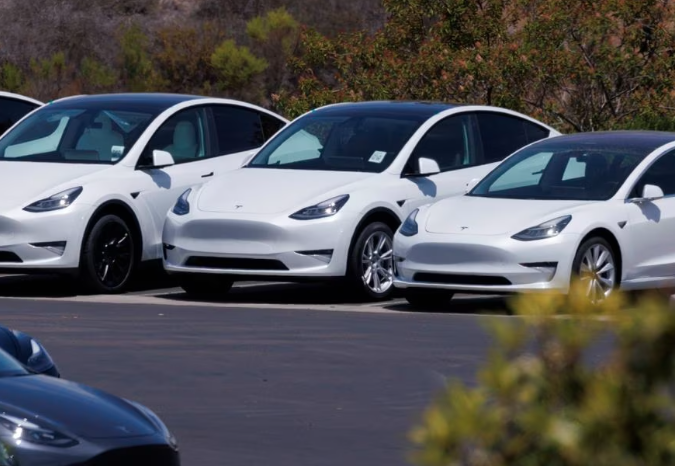Imagine Maria, a single mother living in a densely populated neighborhood in São Paulo. It’s the middle of summer, and the city is being gripped by an unprecedented heatwave.
The temperature has soared to 41°C (106°F), and the relentless heat is unbearable. Maria’s small apartment, with its tin roof and lack of insulation, feels like an oven.
Her children are restless and unable to sleep, and fans do little to provide relief. The local park, once a refuge, is now a sweltering expanse of dry grass and wilting trees. Maria worries about her elderly neighbors and the rising number of heat-related illnesses reported in the news.
This scenario is becoming increasingly common in cities worldwide, highlighting the urgent need to more effectively mitigate extreme urban heat.
That’s why the World Bank partnered with the Korea Research Institute for Human Settlements (KRIHS) to produce the new Combating Heat in Citiesreport, studying how cities globally are addressing urban heat, the World Bank’s existing initiatives, and opportunities to further operationalize the urban heat agenda at the World Bank.
Understanding urban heat
Today, 1.7 billion people are exposed to extreme heat in cities.
Urban heat islands – exacerbated by factors like concrete surfaces, limited vegetation, motor vehicles, and air conditioning – can raise city temperatures by as much as 10°C higher than in nearby areas. And as outlined in the World Bank’s Unlivable report, extreme heat makes cities less livable, inclusive, and competitive, presenting a wide range of challenges for public health, productivity, and growth.
Faced by these challenges, cities worldwide are already adopting various strategies to combat urban heat, categorized by the use of the targeted, integrated, and prepared framework introduced in the World Bank’s Healthy Cities report. These include:
- Targeted measures to protect vulnerable groups from extreme heat, such as Barcelona’s free public cooling shelters, Qatar’s summer midday work ban for outdoor workers, and the Republic of Korea’s comprehensive heat-response package for vulnerable people.
- Integrated actions which incorporate heat into urban planning and design, such as Hong Kong’s strategies to enhance ventilation and shape the wind environment, Freetown’s efforts to build awnings over public marketplaces to reduce sun exposure, and Busan’s cool roof, cool pavement, and urban wind path forest projects.
- Prepared systems and institutions which enhance city preparedness, such as Toronto’s 2023 Heat Relief Strategy, Korea’s National Comprehensive Heatwave Response Plan, and the appointment of chief heat officers in several cities across various countries.
The Republic of Korea’s policies to address urban heat were further summarized in a policy brief, which found that national and local actions have helped to reduce heat-related health costs by US$173.22 million and the heat-related mortality rate by 72 percent.
The World Bank’s role
The Combating Heat in Cities report includes a portfolio review of World Bank projects from FY2012 to FY2023, revealing that World Bank projects are increasingly considering urban heat.
Through a keyword search, the review identified over 2,000 potentially relevant projects, which were narrowed down to over 200 projects relevant to cities. These were categorized into heat-focused with relevant urban heat investments, linkages, and indicators, heat-relevant with relevant urban heat investments and linkages, and heat-potential projects with relevant urban heat investments but without explicit linkages. Of them, 19 projects were identified as heat-relevant, 70 as heat-potential, and 31 remained unclassified, while none were classified as heat-focused.
The heat-relevant and heat-potential projects in the World Bank portfolio include a wide range of different integrated investment activities. For example:
- Green Features: Investments in public parks, green spaces, and tree planting are the most common types of interventions, accounting for 57 projects (48%). These projects, such as the Niger Integrated Urban Development and Multi-Sectoral Resilience Project, aim to create green and blue features that mitigate urban heat.
- Energy Efficiency: Twelve projects (10%) involve increasing the energy efficiency of utilities and buildings, such as the Seismic Resilience and Energy Efficiency in Public Buildings Project in Türkiye, which promotes cool buildings for managing extreme heat events.
- Transport: Eleven projects (9%) address public transit planning and non-motorized transportation, such as walking and cycling. The Ningbo Sustainable Urbanization Project in China, for instance, invested in electric buses to reduce heat and pollution.
- Urban Planning and Design: Ten projects (8%) provide technical assistance for urban planning and design which could indirectly impact urban heat, such as the Republic of the Marshall Islands Urban Resilience Project, which is investing in climate- and hazard-informed urban design guidelines.
- Construction: Five projects (4%) consider the use of permeable-surface and light-colored materials for roofs and pavements to mitigate heat, such as the Türkiye Earthquake, Floods and Wildfires Emergency Reconstruction Project.
Investments in preparedness are also prevalent, with 26 projects incorporating elements like awareness raising, data gathering, and early warning systems, 15% of which are clearly linked to the urban heat agenda. Targeted investments are rare, with only three projects articulating targeted measures, such as the Resilient Infrastructure for Adaptation and Vulnerability Reduction Project in Bangladesh.
Recommendations for future investments
To better contribute to addressing urban heat, the Combating Heat in Cities report makes several recommendations for current and future urban interventions financed by the World Bank:
- Identify Heat Impacts: Highlight the potential impacts of planned interventions on the urban heat agenda.
- Assess Heat Conditions: Collect and analyze data to understand local heat conditions and vulnerabilities.
- Integrate the Heat Agenda: Incorporate urban heat considerations into urban and disaster risk management systems.
- Refine Technical Design: Improve the design of urban infrastructure to include heat-sensitive features.
- Protect Vulnerable Groups: Implement special measures to protect vulnerable populations from heat-related risks.
Looking ahead
The World Bank is committed to helping cities mitigate the impacts of urban heat. By leveraging its technical expertise and financial resources, the Bank aims to enhance urban resilience and ensure sustainable development in the face of rising temperatures.
Through targeted, integrated, and prepared actions, cities can become more livable, inclusive, and competitive, even in the face of extreme heat. The combination of these efforts will ensure the World Bank’s urban investment portfolio is well prepared to respond to the growing threat of urban heat.
Source : World Bank





